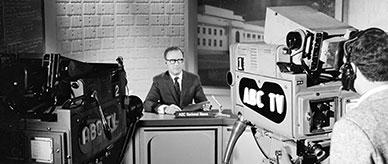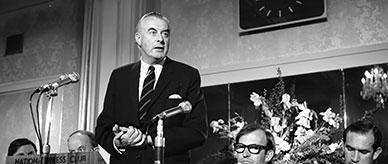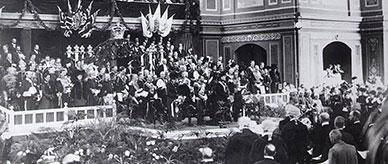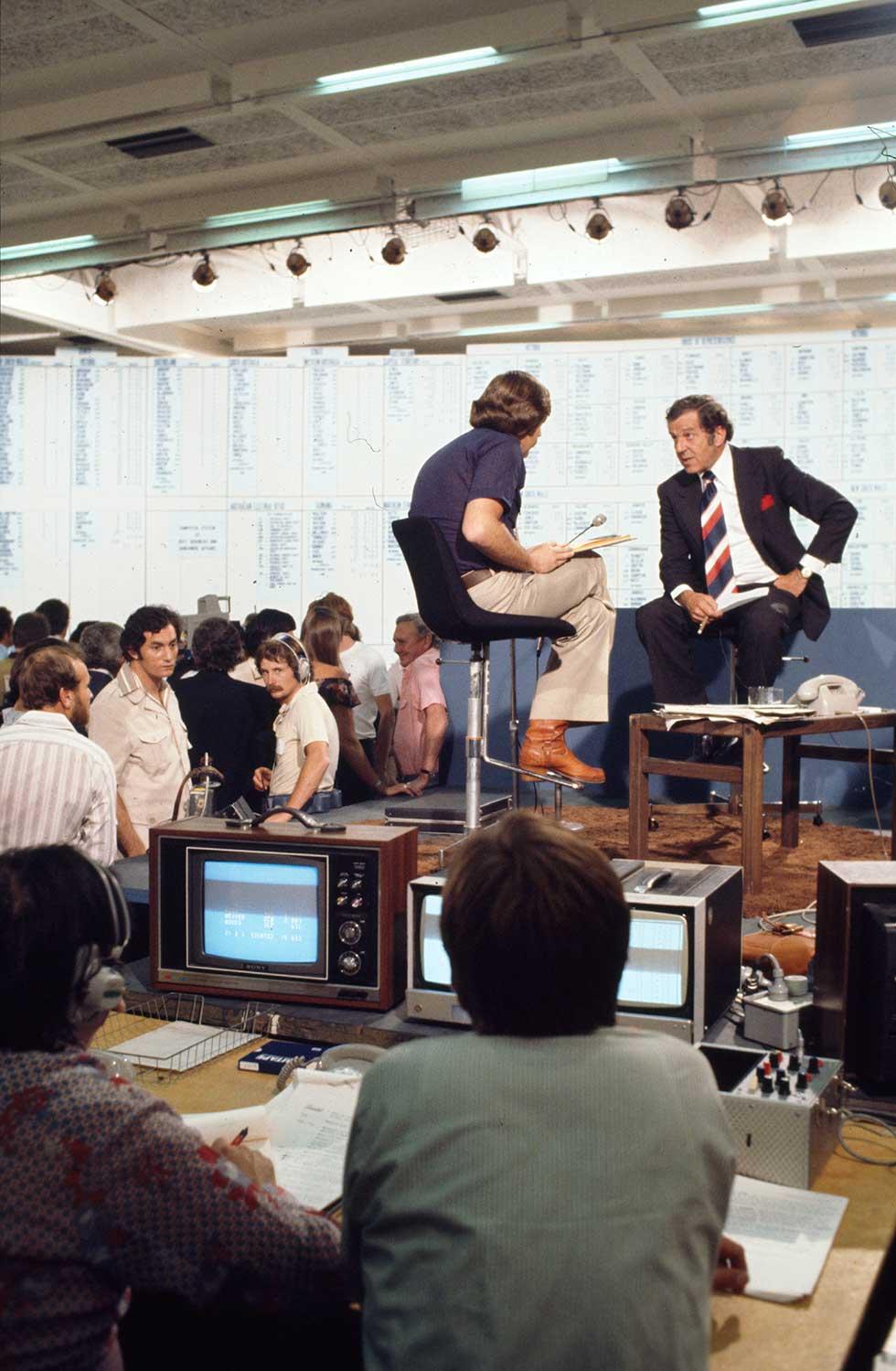
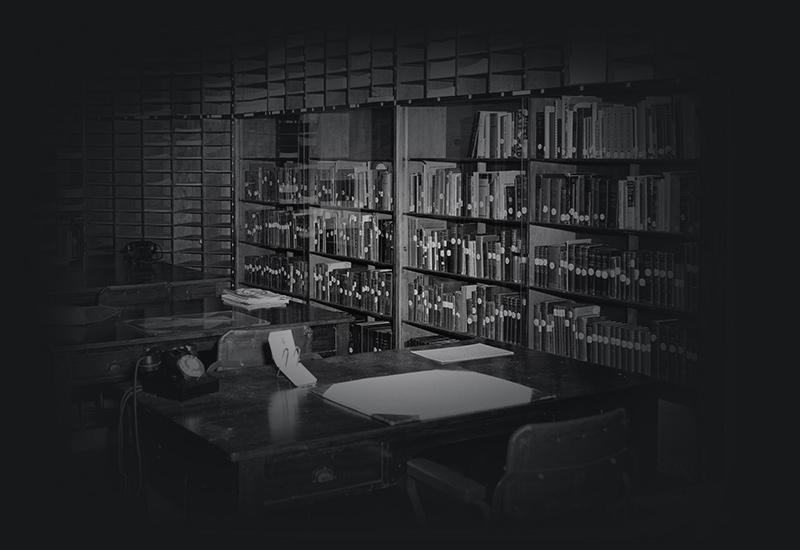

About this record
This colour photograph shows Don Chipp, then leader of the Australian Democrats, being interviewed by a television journalist at the National Tally Room in Belconnen High School, Canberra, as the results of the federal election were being recorded on 10 December 1977. The two men are positioned on a raised platform, with Chipp, dressed in a suit, leaning towards the journalist who sits casually with a sheaf of papers in his lap. Behind Chipp is the National Tally Board. People stand on the Tally Room floor watching results on the Board and two men sit behind a desk watching monitors.
Educational value
- Don Chipp is shown being interviewed in his capacity as leader of a newly formed political party, the Australian Democrats. Chipp and the journalist would have been discussing the significance of the election results, including the primary vote, for the new party. On the night Chipp believed that the strong electoral support for the Democrats indicated disenchantment with vested interests in the Liberal and Labor parties and voters' desire for a third political force to ensure that no government could again be destroyed by a hostile Senate as it was in 1975.
- Contrary to expectations the Australian Democrats did well in this election, the first they had contested, winning 11.1 per cent of the votes in the Senate and 9.4 per cent in the House of Representatives. Two Australian Democrats were elected to the Senate, Don Chipp (Victoria) and Colin Mason (New South Wales). Chipp felt vindicated for his resignation from the Liberal Party and emphasised this in his election night interviews, vowing to 'keep the bastards honest'.
- The photograph shows the National Tally Room (NTR) on election night in 1977. The NTR is the communication centre for the display and coverage of electoral results on federal election nights. From 1974 results were transmitted via a national computer system from electoral divisional offices all over Australia and then manually posted onto a large tally board which was televised across the country. This event adds to the transparency of the electoral process.
- Today, interviews with key politicians in the NTR on election night, as shown in the photograph, still punctuate television network election broadcasts as the votes are being counted and results come through. Politicians from all parties participate, with media hosts and analysts in panel discussions of election results throughout the night. Television networks present their election coverage from temporary sets in the NTR.
- Donald 'Don' Chipp (1925–2006) was a socially progressive Liberal who had been a minister in Liberal governments before Labor's victory in 1972. However, he was not included in the ministry that Malcolm Fraser formed in December 1975. He resigned from the Liberal Party in March 1977, was a driving force behind the formation of the new party in May and won election to the Senate in December. He was party leader of the Democrats when they gained the potential balance of power in the Senate in the 1980 elections. He retired from the leadership in 1986.
Acknowledgments
Learning resource text © Education Services Australia Limited and the National Archives of Australia 2010.
Related themes
Need help with your research?
Learn how to interpret primary sources, use our collection and more.

